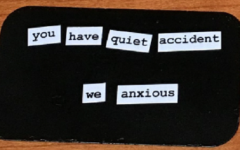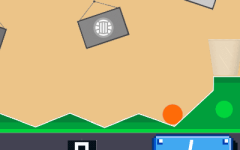Advertisement
SIDE EFFECTS
Advertisement

In Side Effects, you are placed in a laboratory setting with minimal instructions and a single objective: survive the test. Around the table sit other test subjects, each strapped into machines that monitor their vital signs. In front of you is a pile of pills, some of which are safe, others potentially lethal. The rules change slightly with every round. Side Effects doesn’t explain the full system. You are expected to observe, guess, and adapt while the experiment unfolds in real time.
Interactions and Game Logic
Each session of Side Effects involves interpreting partial information, monitoring vitals, and making quick choices. The screen may show a formula, a number of pills in a batch, or a cryptic clue. It’s up to you to decide how to act. The pills are color-coded and come in different shapes, but this is not always reliable. A green capsule might save you once and harm you the next. In Side Effects, observation is your only consistent tool.
Core Gameplay Features
The tension in Side Effects comes from the format of repeated, high-stakes decisions. Every round forces you to either consume or pass a pill, knowing that someone at the table may not survive. While no traditional weapons or puzzles are involved, the challenge lies in interpreting the system and reacting under pressure.
Core elements of gameplay in Side Effects:
- Randomized pill batches with shifting effects
- Monitors that display heart rate and tolerance
- Clues delivered through a central console
- Time-limited decisions shared by all players
- Elimination through incorrect guesses or overload
Each round adds more uncertainty as patterns change and consequences increase.
Player Behavior and Uncertainty
What makes Side Effects stand out is the behavior it encourages. Players may try to cooperate at first, but the pressure of survival changes intentions. Passing a pill can be seen as a gift or a trap. Some players choose to take every risk themselves, while others deflect all responsibility. In Side Effects, there is no enforced morality. You are judged only by whether you’re still alive by the end of the experiment.
Outcome and Design Purpose
The session ends in Side Effects when one player remains, or everyone fails. There’s no explanation, no score screen, only the result of your last decision. The game focuses on tension, probability, and the psychology of limited information. Side Effects offers a structured system where clarity is never total and trust is always temporary.




















































































































































